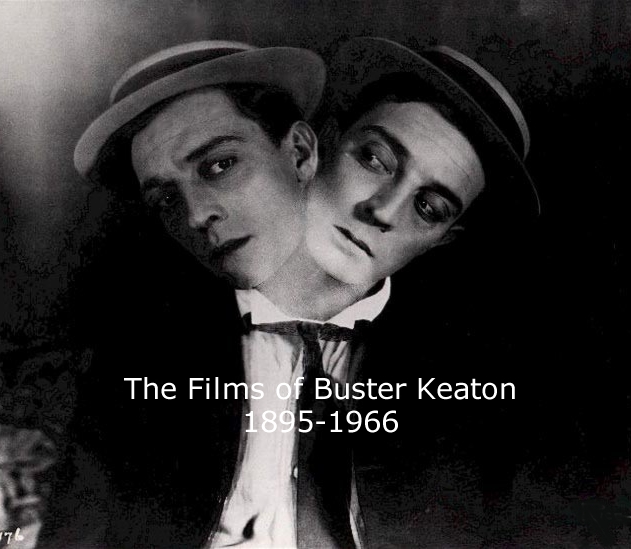
creative film...
The films of Buster Keaton
 | |||||
creative film...
The films of Buster Keaton
| |||||
 Keaton's films enjoyed only moderate
commercial success at the time of their release; it is with the passage of time that their subtle riches have been fully appreciated. Keaton's public signature was his stone face, which seemed never to betray his feelings. But this impassivity was belied by his body, a dynamo of movement and acrobatic grace that carried Buster through many a hostile situation. Trains, automobiles, hot air balloons, houses of all kinds (haunted, electric and build-it-yourself), ocean liners, river boats, row boats, herds of cattle, squads of police, armies of womeneven the mechanism of cinema itself all imperil Keaton as he seeks love, the promise of wealth or the comfort of his family. Unlike Fatty Arbuckle, the comedian who gave Keaton his start in films and who took savage glee in delivering vengeance to the pompous, Keaton sought a measure of serenity in a world where peace is hard to find. Keaton set up his "style" of comedy in One Week (1920), a short about a man trying to assemble a build-it-yourself house. In collaboration with Eddie Cline as scenarist and director, Keaton followed with the surreal Neighbors (1920) and The Boat (1921), to cite two highlights from a prolific period. The Baloonatic (1923) and The Love Nest (1923) were next, and then he and producer Joseph M. Schenck (who was married to Norma Talmadge, sister of Keaton's wife, Natalie) expanded their horizons with the feature The Three Ages (1923). Thereafter Keaton devoted his primary attention to feature films, directing by himself. Within 18 months, he came out with Our Hospitality (1923), Sherlock, Jr. (1924) and The Navigator (1924), a string of first features almost unmatched in film history. Sherlock, Jr. involves a projectionist stepping into and out of the movies he casts upon the screen, becoming subject to the plastic worlds of space and time that Keaton so deftly manipulated in all of his films. A sure sense of what was appropriate and possible on film is what ultimately animates his films for later generations. A few examples from Seven Chances (1925): Keaton wants to show the passage of time, so we see a montage of a puppy growing to become a huge dog; to move his character across town in an automobile, Keaton has him enter the car, dissolves the background to the new location, and the character promptly exits, a new form of shorthand uniquely appropriate to the movies, one that is thoroughly artificial, anything but realistic, but works consistently because Keaton uses his film audience as an "accomplice," and we appreciate it. Keaton took delight in exploring the properties of the medium as in Seven Chances, a silent film in which his character is trying to propose to a woman on a golf course; she is unable to "hear" what we have "seen" (thanks to the titles), and a crowd gathers around him, listening to the words we cannot "hear!" Keaton continued for several years to make works of this high caliber, including his masterpiece, The General (1927), a Civil War romance. But his career came undone when Schenck persuaded him to abandon his own studio and join MGM. From 1928 on, Keaton's ability to improvise and develop his narratives was compromised by the studio production system, which eventually rejected him. Abandoned by his wife, retreating to alcohol, Keaton was reduced to work as a gag man and to bit parts until a 1962 retrospective at Paris' Cinémathèque Française sparked a revival of interest in his early films. In 1965, he acted in two notable short films, Film, from a screenplay by Samuel Beckett, and The Railrodder; that September, he appeared at the Venice Film Festival to a tumultuous reception. Keaton's art and life were splendidly taken up by Kevin Brownlow and David Gill in their TV documentary series, "Buster Keaton: A Hard Act to Follow" (1987). | ||||
|
| ||||